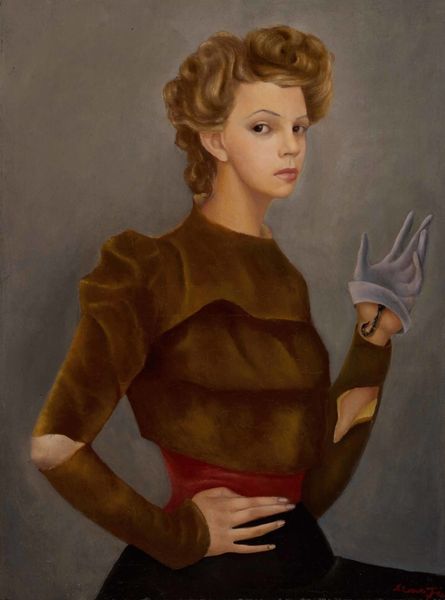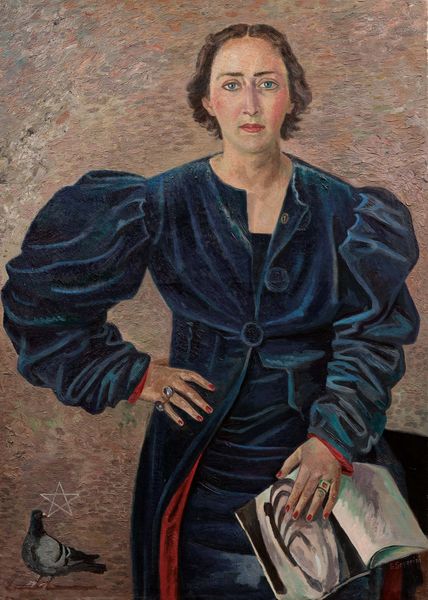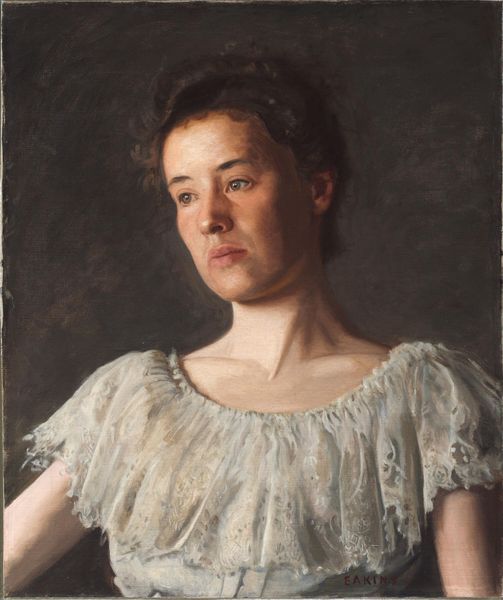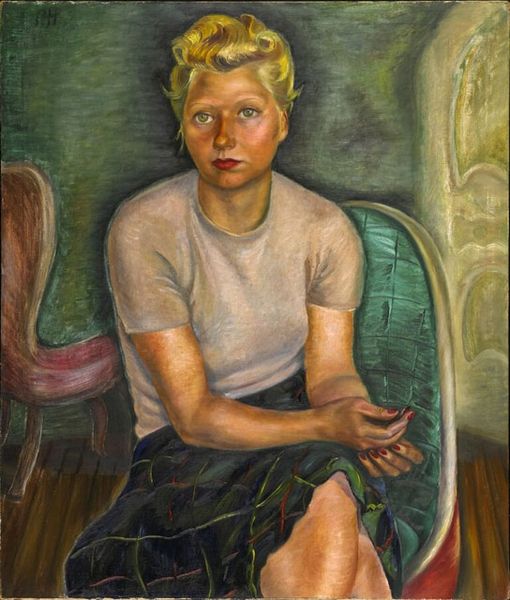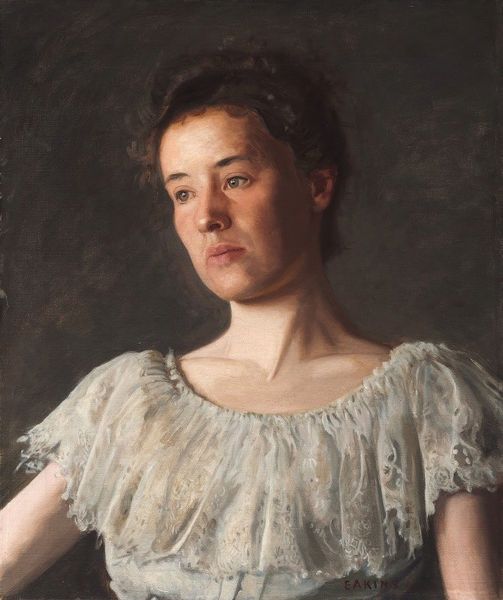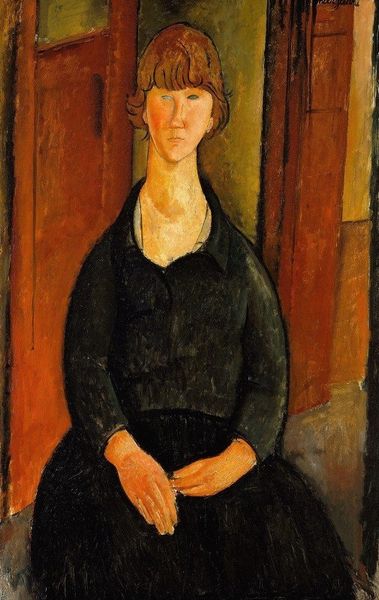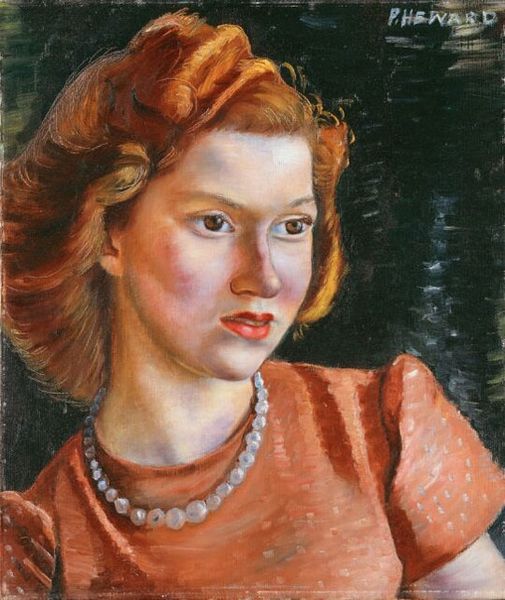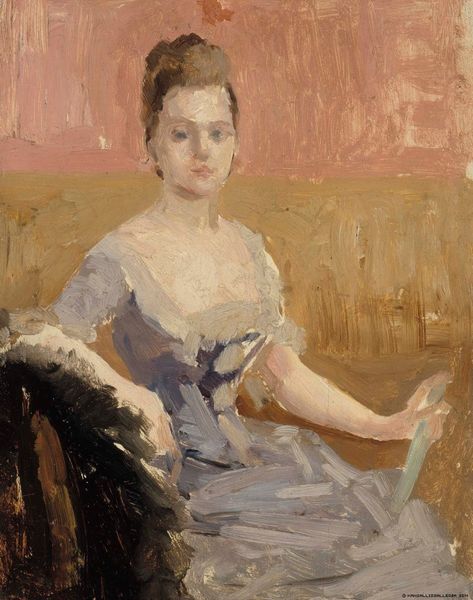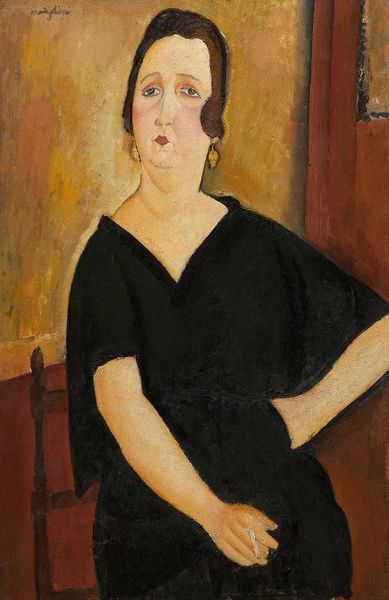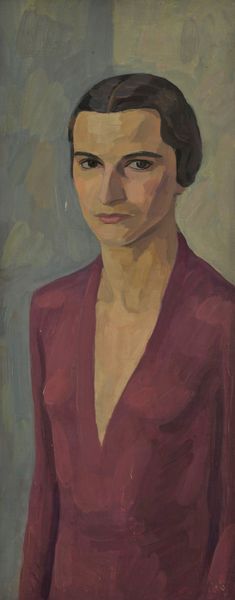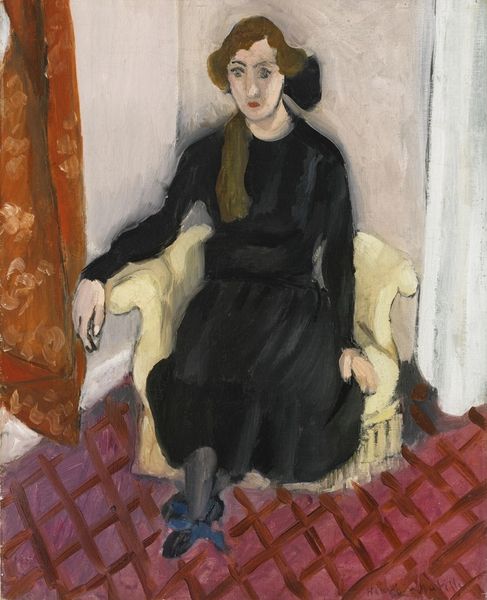
Copyright: Modern Artists: Artvee
Curator: Looking at this portrait, the muted color palette lends it a somewhat serious, introspective air, wouldn't you agree? Editor: Indeed. Let’s delve into that seriousness. This is “Portrait de Gogo Schiaparelli,” painted in 1936 by Léoror Fini, known for her subversive and often fantastical depictions of women. She rendered this artwork with oil paint. But more importantly, what message does the portrait itself conveys about the subject, or perhaps women in general? Curator: Immediately, I’m struck by the sitter’s direct gaze. There's a confidence there, a sense of self-possession that resists simple objectification, which one might expect given Fini’s known affiliations with Surrealism, yet she paints here with strong strokes of Realism. What was the public role for Schiaparelli? Editor: Gogo Schiaparelli, as you may know, was related to the fashion designer Elsa Schiaparelli, and also was an accomplished socialite. It’s worth pondering how Fini subverts traditional portraiture, especially within the art world's often skewed portrayal of women, both in terms of subject and artistic rendering of femininity, especially at a time marked by significant shifts in women’s social roles and artistic expression. What social commentary did Fini make about such shifts through the work, or the individual herself? Curator: Precisely. Gogo’s clothing feels at once both restrained and daring, particularly the juxtaposition of the somber blouse with the vibrant, striped skirt. Her hands, clasped in her lap, offer a gesture of control, resisting, perhaps, the male gaze, while simultaneously allowing for visibility. This intersection of visual signs makes this piece so compelling as an attempt to grapple with issues of social performance. Editor: A thought-provoking point. I feel our analysis helps illuminate this portrait not merely as an aesthetic creation, but as a reflection on the position of women in that particular historical and political milieu. Curator: And by recognizing the tension that Fini constructs in this painting, we, hopefully, deepen our understanding of a society grappling with shifts in identity. Editor: Absolutely. Fini provides a layered perspective that defies any easy understanding, challenging how we interpret artistic representations.
Comments
No comments
Be the first to comment and join the conversation on the ultimate creative platform.
